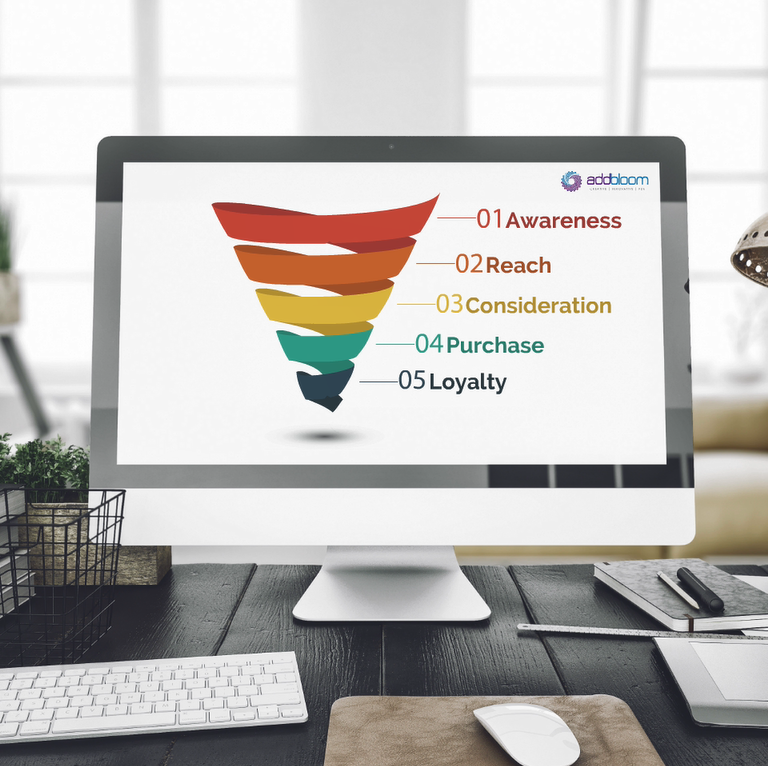How to Develop a Thriving E-Commerce Business
February 19, 2019
AddBloom
Blog

Since its debut in 1991, the e-commerce industry has been on the rise, and has been booming in recent years. Many factors are affecting people’s inclination towards this phenomenon; social media, smartphones, and convenience being on the top of this list. However, not all e-commerce businesses thrive. Here are the top tips to keep in mind when launching or re-launching your ecommerce business:
1- STRATEGY BEYOND CONSTRUCTION
A clear strategy that details your goals and how you plan on achieving them is crucial for the success of your business. Keep in mind that your business mix, specifically your online business mix, does not solely consist of your e-commerce platform. It includes your online presence, your user targeting strategy, your distribution process, and your unique selling proposition. What do you have that others don’t? These and other factors play a big role in setting the ground for your online business development.
2- PUT IN THE RIGHT CAPITAL
Setting up an online store can be done by anyone starting at few thousand dollars (even less) but it takes more than that to bring a business to life. Like all newly opened businesses and ventures, starting an online shop requires more than just setting your site live and sitting back. For instance, many traditional businesses have held back from investing on their online stores but are ready to put in tens of thousands to hundreds of thousands of dollars into decorations for a new physical store.
Build it and they will come is a dream and investment into building your ecommerce presence should go beyond just the platform and into many departments including logistics and marketing. Part of your marketing budget must look at the possible trackable loss of first-time buyer transactions. Understanding the TLV (Total Lifetime Value) of your customer is one of the critical assumptions and KPIs your organization must track. Is losing $10 per first-time transaction good for business? It actually might be, and that depends on your TLV.
Having enough capital to build your store, your brand and drive sales to prove your business model is fundamental to proving and then growing your success.
3- DESIGN AN EXCEPTIONAL EXPERIENCE
Designing and developing a great website is definitely one of these factors, and no, we are not just talking about the look and feel of it but about the whole customer experience. While it may be relatively easy to design a visually appealing site it takes much more research and work to develop a platform that works with the latest features and functionality.
An exceptional user journey has a lot to do with the clarity of the content you have on your website, having an easy and clear checkout process as well as the way you are showcasing your products.
Responsive websites are also essential as they allow the customer to have the same experience across desktop, mobile and tablets. Although the visitor to sale conversion rate is lower for mobile phones than other devices, 2.03% for mobile compared with 4.68% for desktop (smartinsights), designing for the mobile phone is more critical in 2019 than ever. Not having your site built for mobile will penalize in Google’s search algorithm, hurt your SEO and lower your conversion rate making it more expensive to acquire a customer.
4- PARTNER UP WITH PEOPLE WHO KNOW HOW TO DRIVE ENGAGEMENT
One of the main pillars behind the success of your e-commerce is knowing how to drive quality traffic that converts. The funnel below showcases the conversion rate at the different stages of the user journey.
Source: Smartinsights.com

Following points to consider:
Marketing automation is a must when it comes to higher conversion rates and increased customer TLV. In each stage of the funnel, customers can be retargeted through specific ads that drive them back to your website and email reminders can be sent out.
E-mail campaigns are the essence of retargeting campaigns. As the chart below shows you, conversion rate is highest for e-mail campaigns, as the receiver, a customer or a prospect, is already familiar with your brand and what if offers.
Search engine optimization (SEO) is very important to lower your e-commerce’s overall acquisition cost. Hey, who doesn’t want free traffic? Appearing in strategic and prominent places on Google or other search engines can be a game changer when users are performing local searches.
Another way to increase your average checkout value and overall sales is to implement strategic upselling functionalities by showcasing featured product that are complementary or similar to what the customer is looking at. Or, by adding value incentives through bundles or strategic discounts: buy two get one free, free shipping on orders above a certain mark, etc.
Site performance and speed affect the conversion rate on your website. An appealing and responsive website is ought to deliver a higher conversion rate. Every second faster your website loads, conversion rates increases and hence so do your sales. Selecting the right hosting company, ecommerce software/platform and caching system is critical.
Are you ready to take your brand’s digital presence a step further? Contact us now.
Source: